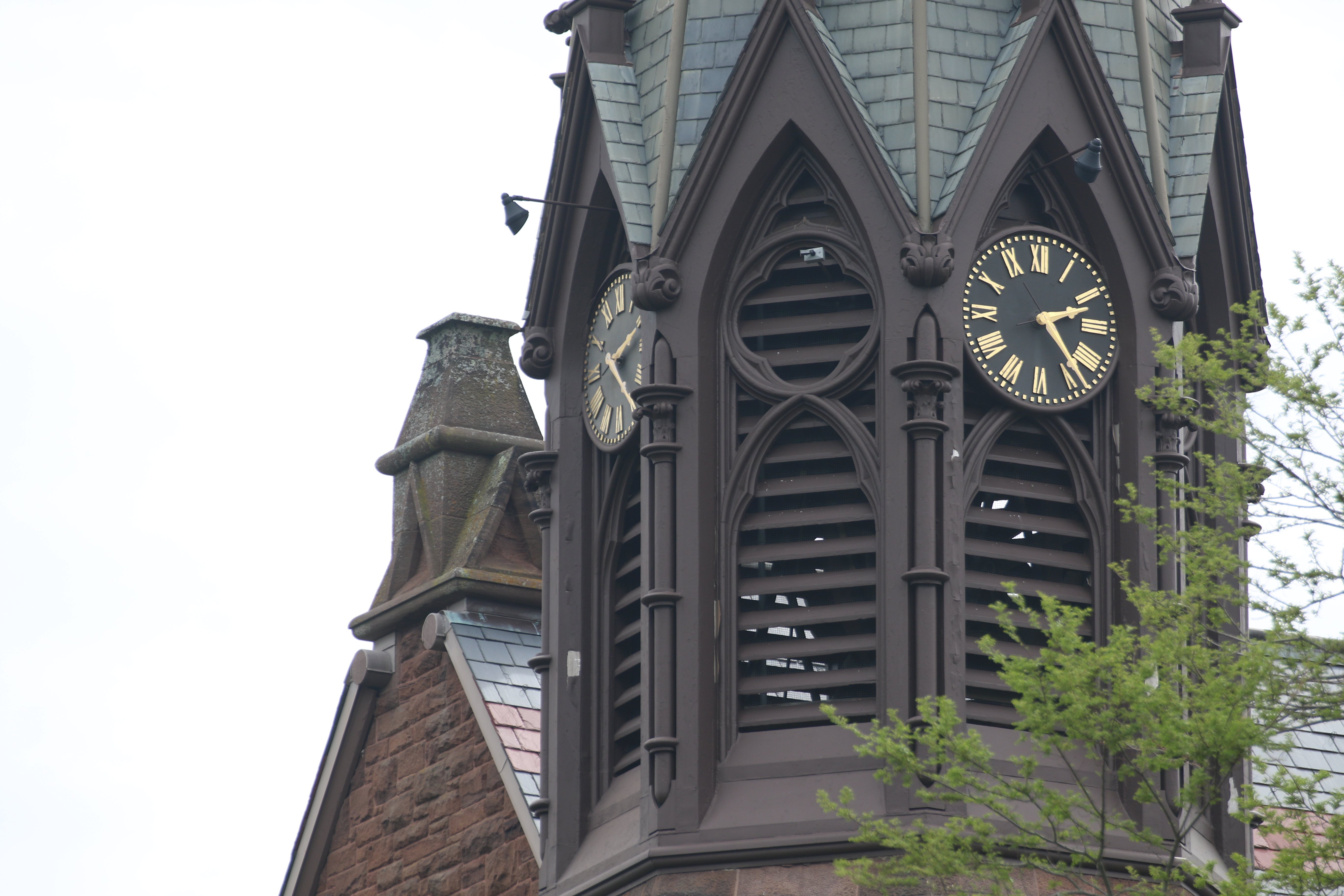
c/o Avi Friederich, Staff Photographer
For the past two weeks, I’ve been searching for members of the Bell and Scroll, a student group that plays the carillon bells above South College. I found out about the group through a WesAdmits post inquiring about membership and decided to pursue my own investigation. To find out more about the society’s history, I went to Olin Special Collections to research the group’s institutional presence, as well as the bells’ role in campus life through time. The bells significantly predate the society’s formation: Bell and Scroll was informally founded in 2002 by a student named Holly Schroll ’02 and the late Peter Frenzel, Professor Emeritus of German Studies. Meanwhile, the University’s collection of bells has been growing since 1918, when the Class of 1863 dedicated a set of 11 bells.
I found a fascinating speech by the Class of 1863’s President Hubbard at his class reunion. He speaks of the first chapel bell’s dual significance to campus life, both as a form of control and a unifying force.
“[The class] came instantly under the swing, and under the sway of the chapel bell,” the speech reads. “That was at once the emblem and the instrument of authority. As in the dark ages, he who controlled the bell in a town controlled the town…. the bell cut short slumbers; it measured our meals; it out-talked the languages, and silenced the sciences, and hushed the humanities. We were helpless.”
For context, the first chapel bell was used to alert students to 5:45 a.m. mass, meals, and numerous other institutional functions. Now that I think about it, I’d be a lot less likely to oversleep my 8:50 if a bell rang out across campus ten minutes before it began. Maybe there’s some wisdom to that.
I also found a list of the inscriptions on the first 11 bells. Each one “rings” for a campus subgroup.
“For him who, in art, beautifies life, I ring,” one reads. “For the citizen, free and just, prepared to serve the state in peace or war, I ring,” says another.
Today, these eleven dedications paint a narrow picture of the student body. Wesleyan students are far more interdisciplinary and multifaceted than strict groupings of writers, artists, philosophers, and scientists. Even those who identify with these categories comprise a cohort far more diverse than the male, God-fearing, Americans among them. The same is true for the faculty, yet each of these demographic subgroups has a bell that rings for them.
Only the fifth and eleventh bells remain ubiquitous in contemporary terms.
“For the scholar who preserves learning, I ring,” reads the fifth bell. “For him who in any station seeks not to be ministered unto but to minister, I ring,” the eleventh says.
I was struck by the dated picture of the institution that these inscriptions proposed. The hierarchy insinuated by church bells at a predominantly white, wealthy institution pointedly ringing for specific campus subgroups is not lost on me. These narrow dedications made me consider whether the current cohort of Bell and Scroll was representative of (or, for that matter, felt represented by) the narrow typology established by these inscriptions.
I was and am still excited by the prospect of asking the bell ringers themselves about their craft. That is to say, of course, that I have not yet gotten the chance to do so. Every day for a week, I positioned myself outside South College at noon, as multiple Argus articles from years past cited this as the best way to find a member of the society. No such luck. I DM’d the society’s Twitter (it is inactive, and when it was active, it only tweeted various permutations of the word “ding”), reached out to both of its email addresses, and emailed the Center for Retired Faculty in hopes that someone would know who succeeded Professor Frenzel as the group’s faculty advisor. While I learned a great deal from Krishna Winston, Director of the Center and Marcus L. Taft Professor Emerita of German Language and Literature, regarding Professor Frenzel’s role in growing Wesleyan’s collection to 24 bells and establishing Bell and Scroll’s repertoire, my attempts to contact the society directly were fruitless.
The experience of seeking out individuals who would clearly prefer anonymity has been somewhat Sisyphean. Every time I thought I refined this article’s angle, or found a new lead, I was met with continued silence. Remarkable how easy it is to remain unseen if one chooses to do so. Clearly, I’m awful at taking hints, so consider this an open invitation. Bell and Scroll, if you’re reading this, I’d love to talk. For that matter, if the new faculty advisor is reading this, I’d be similarly interested. I can respect that members would like to remain anonymous, as is tradition, but if nothing else, I’d like to fill in the gap of history following Professor Frenzel’s passing. Wesleyan’s website entry concerning the bells has not been updated to reflect his death, and this transitional period for such a subtly influential group on campus deserves to be documented. Show yourselves, ringers!
Vadim Gorbaty can be reached at vgorbaty@wesleyan.edu
-
Bell&Scroller ‘10